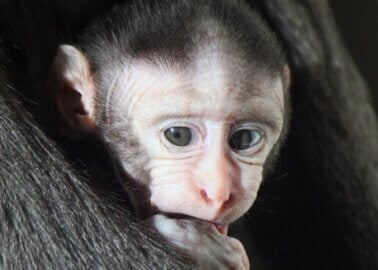Technology Donated by PETA International Science Consortium Is Great News for Animals and Humans!
Dogs, rats, mice, and birds can breathe easier today. The PETA International Science Consortium Ltd. (the Science Consortium) has donated two life-saving VITROCELL devices to the Institute for In Vitro Sciences (IIVS), a non-profit laboratory that conducts animal-free testing. These machines will help prevent animals from being forced to inhale toxic chemicals for hours at a time before being killed.

The donated equipment uses human cells instead of animals to predict the effect that an inhaled chemical will have on the lungs.
Two Life-Saving Devices
One donation was the result of a partnership among the Science Consortium, Imperial Brands PLC, Altria Client Services, British American Tobacco PLC, and Philip Morris International Inc. The groups donated an extension for one of the devices that the Science Consortium donated to IIVS in 2017, which is needed to keep up with the demand for non-animal methods to test smoke, e-vapour, and other chemicals.
The second device donated by the Science Consortium – valued at over £40,000 – is helping to meet the high demand for assessing substances that the machine mentioned above can’t test. This device was recently installed and has already been used by IIVS to meet the needs of personal-care product companies that don’t want to test their products on animals.
Human-Relevant Science
To help researchers conduct non-animal inhalation testing, the Science Consortium has previously provided four pioneering laboratories around the world with inhalation testing devices that do not use animals.
The recipients included researchers at Edinburgh’s Heriot-Watt University, who are using the equipment in a Science Consortium–funded project to develop a non-animal method for predicting lung fibrosis in humans.
The devices, made by German manufacturer VITROCELL, test for the health effects of inhaled substances using human lung cells in a dish. Humans breathe in numerous chemicals every day. Some of these, such as cigarette smoke, may be intentionally inhaled, while others, such as airborne pesticides, are not.
With the VITROCELL machines, human cells are exposed to the airborne chemical on one side – while receiving nutrients from a blood-like liquid on the other – mimicking what actually occurs when a chemical enters a human lung.
The cells are obtained from biopsies, cadavers, donated tissues, etc., meaning that no one suffers for the tests.
And since the machines use human cells, scientists get a much better idea of how human lungs would respond to a chemical – rather than forcing animals to inhale it and then trying to apply those results to a completely different species.
No Animal Needs to Suffer in Inhalation Experiments
PETA and PETA US are members of the Science Consortium, which is working with industry, academia, and government agencies to advance non-animal inhalation techniques. Learn more about the development of these methods around the globe here.
What You Can Do for Animals Used in Experiments
Your help will bring us closer to a world in which all animals are regarded as individuals, not laboratory tools, and a time when we’ll look back on tests on living, breathing beings as part of a painful, dark past.
Please take 30 seconds to fire off e-mails and add your name to petitions and open letters to help animals suffering in laboratories:



